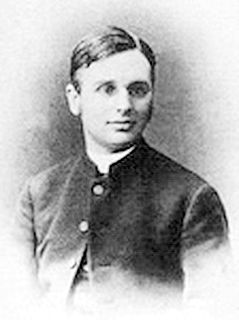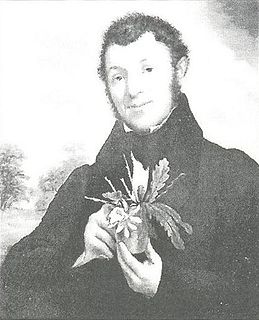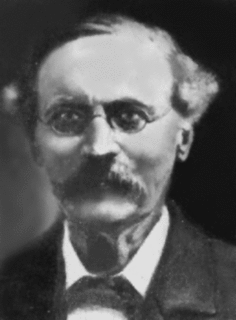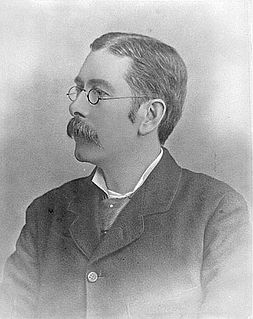 W
WAlfred William Alcock was a British physician, naturalist, and carcinologist.
 W
WThomas Bell FRS was an English zoologist, surgeon and writer, born in Poole, Dorset, England.
 W
WHenry Meyners Bernard was a British biologist, carcinologist, palaeontologist, mathematician and cleric, and an authority on solifuges, corals and trilobites. He was the third of six children born to Alfred George Farquhar Bernard and Elizabeth Antoinette Moor.The death of Henry M. Bernard removes from our midst a friend and fellow-worker who will be greatly missed by a large circle of men of science. Mr. Bernard took mathematical honours at Cambridge as B.A. in 1876, and entered the Church, his last charge being a Chaplaincy at Moscow, which he left in 1888 in order to study Biology under Haeckel at Jena. In 1892 Mr. Bernard published an important monograph on "The Apodidae", his study of these forms leading to papers in the GEOLOGICAL MAGAZINE in 1894 and 1895 on the systematic position of the Trilobites, and on the 'Sandblast' as a method of developing these organisms from the rocks in which they are embedded. In 1894 he began the study of the recent and fossil corals at the British Museum, continuing the quarto 'Illustrated Catalogue of the Madreporaria' originally commenced by the late Mr. George Brook. In this work Mr. Bernard paid much attention to the fossil forms. He continued to work at the corals in the British Museum until 1907. During these thirteen years he prepared five volumes, namely :— Vol. II of the Catalogue on the Turbinaria and Astraeopora. III, on the Montiporina;. IV, Goniopora. V, Porites (Indo-Pacific). VI, Porites and Goniopora.
 W
WGeorge Stewardson Brady was a professor of natural history at the Hancock Museum in Newcastle-upon-Tyne who did important volumes on Copepoda and Ostracoda, including those from the Challenger expedition.
 W
WCharles Robert Darwin was an English naturalist, geologist and biologist, best known for his contributions to the science of evolution. His proposition that all species of life have descended over time from common ancestors is now widely accepted, and considered a foundational concept in science. In a joint publication with Alfred Russel Wallace, he introduced his scientific theory that this branching pattern of evolution resulted from a process that he called natural selection, in which the struggle for existence has a similar effect to the artificial selection involved in selective breeding. Darwin has been described as one of the most influential figures in human history, and he was honoured by burial in Westminster Abbey.
 W
WDr Isabella Gordon DSc OBE FZS FLS was a respected Scottish marine biologist who specialised in carcinology and was an expert in crabs and sea spiders. She worked at the Natural History Museum and received an OBE in 1961.
 W
WAdrian Hardy Haworth was an English entomologist, botanist and carcinologist.
 W
WCaptain Frederick Wollaston Hutton was an English-New Zealand scientist who applied the theory of natural selection to explain the origins and nature of the natural history of New Zealand. An army officer in early life, he then had an academic career in geology and biology. He became one of the most able and prolific nineteenth century naturalists of New Zealand.
 W
WThomas Henry Huxley was an English biologist and anthropologist specialising in comparative anatomy. He is known as "Darwin's Bulldog" for his advocacy of Charles Darwin's theory of evolution.
 W
WWilliam Sharp Macleay or McLeay was a British civil servant and entomologist.
 W
WThomas Jeffery Parker F.R.S. was a zoologist who worked in New Zealand.
 W
WGeorge Samouelle was a curator in the British Museum of "no real scientific aptitude".
 W
WThe Reverend Thomas Roscoe Rede Stebbing FRS, FLS was a British zoologist, who described himself as "a serf to natural history, principally employed about Crustacea". Educated in London and Oxford, he only took to natural history in his thirties, having worked as a teacher until then. Although an ordained Anglican priest, Stebbing promoted Darwinism in a number of popular works, and was banned from preaching as a result. His scientific works mostly concerned crustaceans, especially the Amphipoda and Isopoda, the most notable being his work on the amphipods of the Challenger expedition.
 W
WAdam White was a Scottish zoologist.
 W
WJames Wood-Mason was an English zoologist. He was the director of the Indian Museum at Calcutta, after John Anderson. He collected marine animals and lepidoptera, but is best known for his work on two other groups of insects, phasmids and mantids.